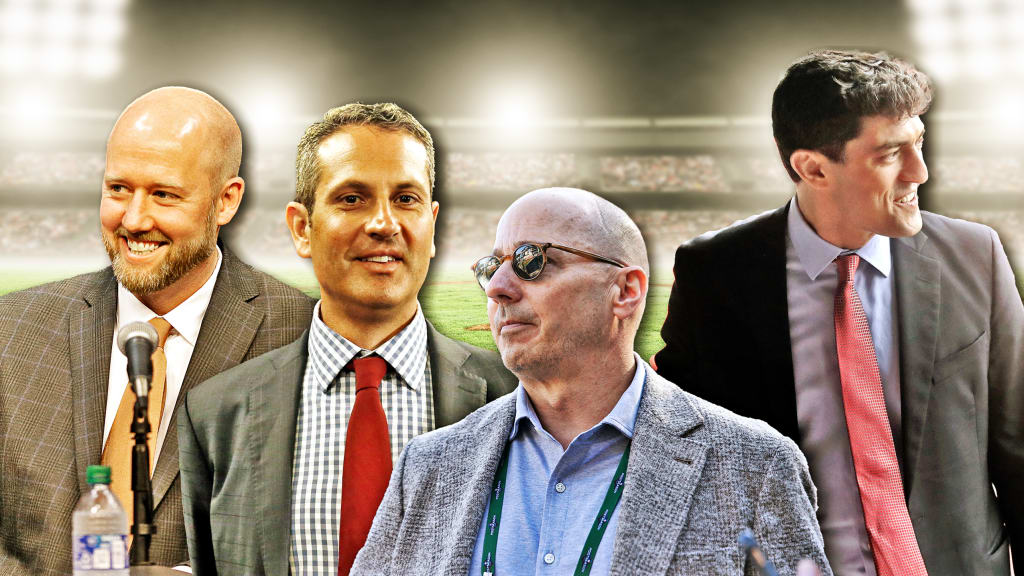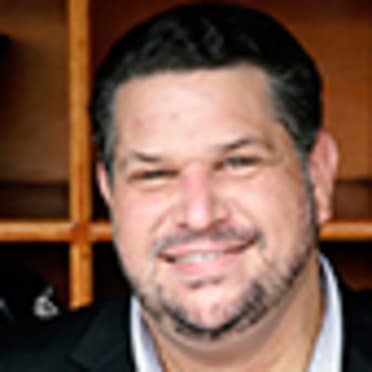
Brian Cashman is in his 23rd season as the Yankees' general manager. James Click's tenure in the same position with the Astros began less than six months ago.
Yet as the 2020 season gets set to restart with Summer Camps around the league this weekend, every front-office executive is on level footing when it comes to the intricacies of the new rules and regulations that will govern the shortened season ahead.
"I don't think it matters if you have a year or 20 years' experience in this job; given everything else that's going on in the world right now and what's going on in the game, none of us has any experience with this that we can rely on," Click said. "There's no playbook for this situation. All of us, in a lot of ways, are kind of first-year GMs right now trying to figure this whole thing out."
Whether it's the 60-man player pool, three-player taxi squad or the Aug. 31 Trade Deadline, the standard flow of a season will be anything but routine in 2020, when a 60-game sprint will bring its own unique challenges.
From the moment the 2020 Operations Manual was delivered to clubs last week, front offices began their deep dive to fully familiarize themselves with every word.
Red Sox chief baseball officer Chaim Bloom relied on lieutenants Mike Regan and Alex Gimenez, who tried to highlight "everything that might be different or everything that might be something we need to be aware of" in the 101-page document.
"It's one thing to read a manual," Bloom said. "It's another thing to live it."
For Twins GM Thad Levine, devouring the rules, regulations and protocols brought back memories of cramming for finals.
"We certainly gave it to the people who were more recently in college because they were more fluent in that exact process," Levine said. "Some of us more senior statesmen, we read it but then waited for the breakdown from the guys who had just finished writing thesis and whatnot."
The task of putting together a roster began last week, as front offices worked meticulously to build their ideal 60-man player pool. Some included a number of young prospects not on the 40-man roster, wanting to further their development in a year that won't feature Minor League games. Others took the approach of only including youngsters they believed were ready to contribute at the big league level in 2020, believing they might need something from every one of those 60 spots.
"Like so many teams, we really were weighing the merits of trying to keep a certain subset of our prospects active and engaged with the thought of having to protect a Major League team at a level that we probably have never had to contemplate," Levine said. "Historically, when you put together those spreadsheets, you feel pretty good if you've got one line of defense, good if you have two lines of defense, and damn near ecstatic if you've got three lines of defense at certain positions. Now I think we just have no concept of how deep we're going to have to go to make it through a season. And then when that's further magnified in our case by a team that is aspirational of competing this year, it's even more significant."
Minnesota put 13 of its Top 30 prospects (per MLB Pipeline) in its Player Pool, including five of the team's top six prospects. The Brewers and Orioles have only three of their Top 30 on their respective 60-man lists, while the Mariners lead the way with 22 of their Top 30 in their player pool.
"When you're initially told you have 60 players who can service a big league team, the initial reaction is, 'That seems more than enough,'" Levine said. "Until you have a conversation with your medical staff and they say, 'When one person has a challenge with COVID and then you do the contact tracing, it's highly likely there's going to be a spider-web of impact throughout your organization.' Then you realize how quickly that 60-man pool can dwindle. The depth element of this and protecting your Major League team was significant."
The Yankees included 10 of their Top 30 prospects in their player pool, though only two of them -- right-handers Clarke Schmidt and Alexander Vizcaino -- were not already on the 40-man roster.
"The only way to get somebody off the 60 is a trade, outright or release; there are a number of new challenges and concerns with that," Cashman said. "We definitely don't want to be in a position where we're declaring, 'Here's our group,' then all hell breaks loose on your roster whether it's part injury or part COVID, and you have to dip into your system. Now you're exposing yourself to lose young players that you were just trying to utilize the next 2 1/2 months to develop. All of it is a challenge."
There will be myriad challenges surrounding the accelerated Aug. 31 Trade Deadline, starting with the fact that teams can only trade players in their 60-man player pool, so GMs won't have the wide array of prospects to potentially include in a deal that they would in a normal year.
Additionally, the Deadline will come as teams have played roughly 35 of their 60 games. Executives will have to assess their needs based on a relatively short sample size, not to mention handicapping their postseason odds to decide whether to buy, sell or stand pat.
"It's going to make the impact of those decisions that much greater," Bloom said. "I don't think it will necessarily change the actual significance of those sample sizes, but the fact is that they're going to have a much bigger weight on how the season unfolds. We will all have to decide how to factor that in."
Those exercises typically come four months into the six-month marathon, but there's nothing typical about the 2020 season we're about to embark upon.
"You get used to what those dates look like, the rhythm of it, the timing of all those things," Click said. "Now we have to relearn all of that on the fly. To me, that's ultimately the biggest challenge.
"A lot of us have experience with starting on Aug. 1 and being tied with or very close to two or three other teams for playoff spots. From that perspective, it won't be all that different; you'll just have to recalibrate your brain a little bit. What we don't have experience with is having a deadline four weeks from the end of the season, which creates a little bit of a tricky scenario in terms of balancing trying to win this year vs. other years."
Bloom also noted that because of the coronavirus and the various safety protocols involved, a potential trade will impact players in ways they have never before. Whether it's moving to another city, inserting yourself into a clubhouse with new people, uprooting your family or a host of other issues, being traded this season could be a jarring experience for players.
"All we can do is try to just adapt what we normally do to this situation and make sure we have a really sound process," Bloom said. "Make sure we're looking very clear-eyed at all of the considerations, and make sure that when there are transactions under consideration that we're handling our players with empathy, with dignity and making sure that we remember that they are people trying to navigate this thing just like we are."
As Cashman and his peers navigate the landmines of simply getting their camps open -- he compared to the past week to "drinking out of a fire hose" -- the Yankees' GM hasn't started to think about the potential of what could come out of a unique Trade Deadline.
"I haven't had a chance to daydream that far out in the future," Cashman said. "I would think that it's easy to say right now in the front end of it that it's highly unlikely to have a crazy amount of activity, but once you settle in and you start playing consistent ball -- even if it's a shortened season -- those competitive juices kick in and you want to do everything you can to reinforce your roster.
"When you're in the middle of it and if you smell a chance to do something special, a lot of things can potentially transpire. Ultimately, we're in it to win it. I think everybody else should be feeling the same way, especially in a shortened season. It heightens the ability for anybody to really take a shot at the title, so how they respond to this challenge remains to be seen."
All of the new rules and regulations might be causing heads to spin in front offices around the league, but those aren't even the most crucial aspects of the 101-page Operating Manual. The health and safety protocols are what will hopefully allow the season to play out to completion, so as teams get set to open their ballparks and alternate training sites for workouts, that has been the biggest area of focus for clubs.
"The entire world is so different right now; I think it all rolls into this big question of how do you navigate a lot of the unknowns?" Bloom said. "How do you accurately foresee what the actual impact of some of these changes will be? We all know anytime that we change something, there are certain effects that we anticipate, that we work towards and then there are always some unintended consequences. I think trying to figure out what those [are] will be a big part of successfully navigating this new environment."
